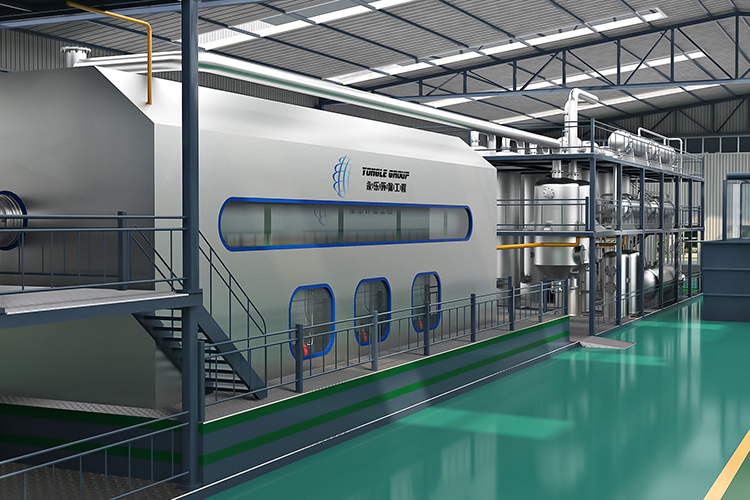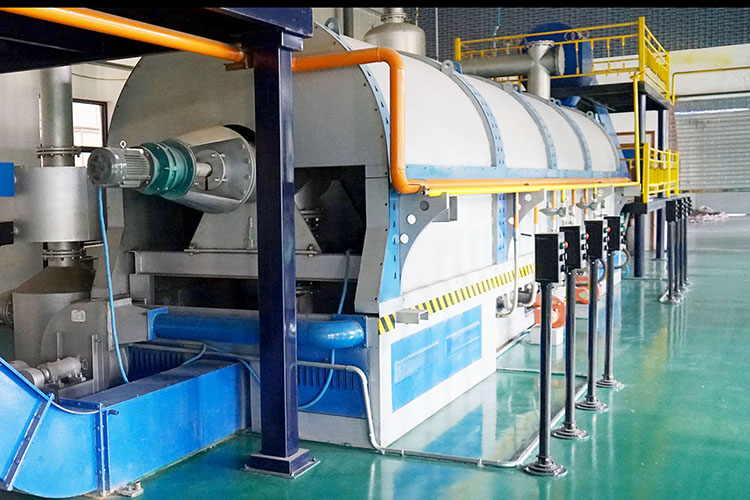In recent years, with the acceleration of urbanization and the improvement of people's living standards, the amount of household waste generated has been continuously increasing. How to effectively handle these household waste has become an important issue faced by governments and environmental organizations around the world. Among various waste treatment methods, household waste incinerators have been widely used due to their significant advantages in reduction, harmless treatment, and energy recovery. This article will explore in detail the reasons and advantages of the widespread application of household waste incinerators.

One of the biggest advantages of household waste incinerators is their significant reduction effect. By high-temperature incineration treatment, the volume of garbage can be reduced to less than 10% of its original size, greatly reducing the difficulty and cost of garbage treatment. Compared to traditional landfill methods, incineration treatment reduces the occupation of land resources and extends the service life of landfills. Especially in urban areas with limited land resources, incineration treatment is particularly important. Household waste contains a large amount of pathogens, harmful microorganisms, and toxic and harmful substances. High temperature incineration can not only completely kill these pathogens and prevent the spread of diseases, but also decompose some toxic and harmful substances, reducing environmental pollution. Modern incinerators are equipped with advanced flue gas purification systems, which can effectively control the emission of harmful substances such as dioxins and heavy metals, ensure that emission standards meet environmental requirements, and reduce the impact on the atmospheric environment.
The process of burning garbage generates a large amount of thermal energy, which can be converted into steam through waste heat boilers for power generation or heating. Incineration of household waste for power generation not only reduces the cost of waste treatment, but also provides clean energy for cities and alleviates energy shortages. For example, countries such as Japan and Germany have achieved significant results in the field of household waste incineration power generation, meeting the energy needs of some cities through waste incineration power generation. The residue after incineration of household waste mainly consists of slag and fly ash. After treatment, the slag still contains a certain amount of metal components, which can be further recycled and utilized to reduce resource waste. Meanwhile, some incineration slag can also be used as building materials or road fillers to achieve resource reuse.

Compared to garbage classification and landfill treatment, incineration treatment systems have higher management convenience. Household waste incinerators can handle various components and types of waste without the need for complex classification and pretreatment, which is particularly important in areas where the waste classification system is not yet perfect. The automation level of the incineration treatment system is relatively high, and the operation and management are relatively simple, reducing labor costs. The landfill process produces a large amount of methane gas, which is a greenhouse gas more potent than carbon dioxide and has a more significant impact on climate change. In contrast, the carbon dioxide generated during garbage incineration can be controlled through advanced flue gas purification technology to reduce atmospheric pollution. Meanwhile, incineration power generation can replace the use of some fossil fuels, further reducing greenhouse gas emissions and helping to address global climate change issues.

Incineration of household waste is not only a waste treatment method, but also an important component of circular economy. By using waste incineration to achieve reduction, harmless treatment, energy and resource recovery, it can promote the recycling of resources, reduce the consumption of natural resources, and promote sustainable development. The concept of circular economy has been promoted and applied in many countries and regions, and the widespread application of household waste incinerators is an important practice of this concept. In summary, household waste incinerators have become an indispensable and important component of modern waste treatment systems due to their significant reduction effects, effective harmless treatment, energy and resource recovery, management convenience, and reduction of greenhouse gas emissions. With the advancement of technology and the enhancement of environmental awareness, the technology of household waste incineration will continue to be optimized and improved, making greater contributions to the sustainable development of cities and environmental protection.
Yongle Environmental Protection is mainly engaged in the research and development, production and sales of complete sets of technical equipment for organic solid waste disposal and comprehensive utilization. Production and manufacturing, domestic waste treatment equipment, tire pyrolysis equipment, medical waste disposal equipment, hazardous waste disposal equipment, and achieve efficient and comprehensive utilization of resources through independently developed low-temperature anaerobic pyrolysis equipment technology solutions.
Tags:The widespread application and advantages of household waste incinerators,Household waste incinerator,YONGLE GROUP
 Latest news
Latest news


























